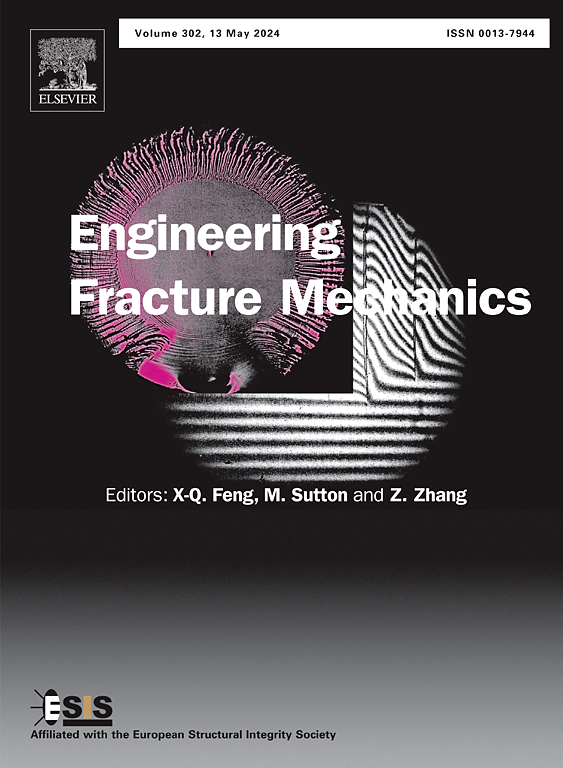通过物理测试和 PFC3D 分析研究层状岩石的拉伸破坏机制
IF 4.7
2区 工程技术
Q1 MECHANICS
引用次数: 0
摘要
与剪切力或压缩力相比,岩石通常表现出较小的抗拉强度,而拉伸裂缝往往出现在剪切力或压缩力破坏之前。目前的研究包括实验方法以及利用三维粒子流代码(PFC3D)进行的计算测试,以评估层厚度和力学参数对连续拉伸条件下层状岩石类材料的强度和破坏模式的影响。混凝土试样直径为 54 毫米,厚度为 27 毫米,抗拉强度为 1.35 兆帕。石膏试样的测量值相同,抗拉强度为 0.6 兆帕。此外,还对两种材料进行了单轴抗压强度测试,结果显示混凝土的抗压强度为 18 兆帕,石膏的抗压强度为 6 兆帕。我们的研究结果表明,层厚度和机械性能在很大程度上影响着这些材料的破坏模式、抗拉强度和渐进变形。分层试样的破坏模式表明,通过数值测试和直接拉伸测试确定的抗拉强度同样准确。经验结果和计算结果都与失效标准的分析预测相一致。在岩石工程中,这些破坏标准在预测抗拉强度和反映层状岩石(如层状砂岩、板岩和页岩)的破坏模式方面具有很高的准确性。本文章由计算机程序翻译,如有差异,请以英文原文为准。
Investigating tensile failure mechanisms of layered rocks through physical testing and PFC3D analysis
Rocks generally exhibit less resistance to tension compared to shear or compression forces, and tension cracks often precede shear or compression failures. While the mechanical performance of rock layers under compression has been widely described, their tensile behavior is less known.
The current study includes experimental approaches as well as computational testing with the three-dimensional Particle Flow Code (PFC3D) to evaluate the effect of layer thickness and mechanical parameters on the strength and failure patterns of layered rocks-like materials under continuous tension.
The Brazilian tensile strength test was conducted on concrete and gypsum specimens. The concrete specimen measured 54 mm in diameter and 27 mm in thickness, resulting in a tensile strength of 1.35 MPa. The gypsum specimen, with the same measurements, had a tensile strength of 0.6 MPa. In addition, uniaxial compressive strength tests were performed on both materials, yielding compressive strengths of 18 MPa for concrete and 6 MPa for gypsum. Our findings indicate that layer thickness and mechanical properties considerably influence failure patterns, tensile strength, and progressive deformation of these materials. The failure modes seen in the layered specimens indicate that the tensile strength ascertained by numerical testing and direct tensile testing is equally accurate. Both the empirical and computational findings are in accordance with the analytical predictions of the failure criterion. In rock engineering, these failure criteria have a high degree of accuracy when it comes to predicting tensile strength and reflecting the failure modes of layered rocks, like layered sandstone, slate, and shale.
求助全文
通过发布文献求助,成功后即可免费获取论文全文。
去求助
来源期刊
CiteScore
8.70
自引率
13.00%
发文量
606
审稿时长
74 days
期刊介绍:
EFM covers a broad range of topics in fracture mechanics to be of interest and use to both researchers and practitioners. Contributions are welcome which address the fracture behavior of conventional engineering material systems as well as newly emerging material systems. Contributions on developments in the areas of mechanics and materials science strongly related to fracture mechanics are also welcome. Papers on fatigue are welcome if they treat the fatigue process using the methods of fracture mechanics.

 求助内容:
求助内容: 应助结果提醒方式:
应助结果提醒方式:


